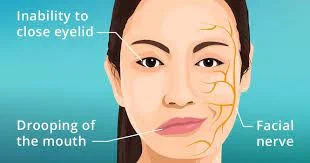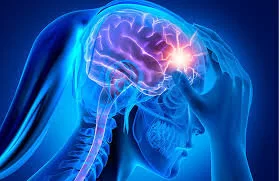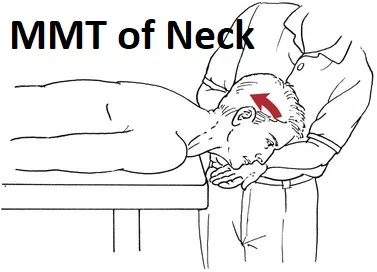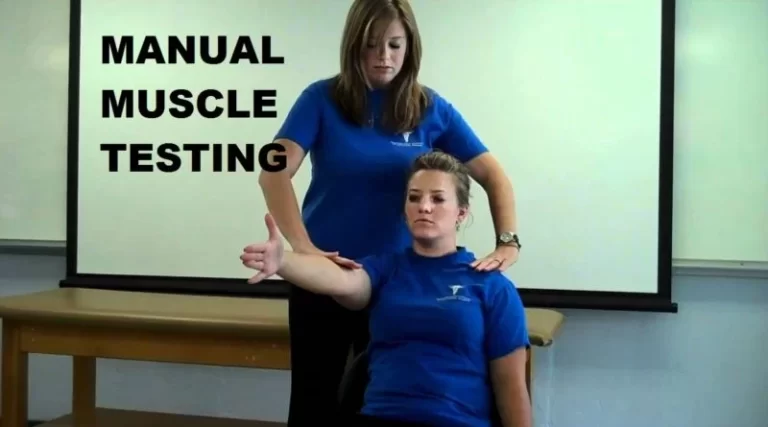Bell’s Palsy
Table of Contents
What is Bell’s palsy?
Bell’s palsy is a condition that causes sudden weakness in one side of the facial muscles. In most cases, the weakness is temporary and significantly gets better over weeks. The weakness makes half of the face droop. One-sided smile and eye closing is affected on the affected side.
It is also known as acute peripheral facial palsy with an unknown cause. It can occur at any age. The exact cause is not known. Some experts think it is caused by swelling and inflammation of the nerve that controls the muscles on one side of the face. It can be caused by a reaction that occurs after a viral infection.
Bell’s palsy can strike anyone at any age. It occurs most often in pregnant women, and people with diabetes, influenza, a cold, or another upper respiratory ailment. Bell’s palsy affects men and women equally. It is not seen before age 15 or after age 60.
Bell’s palsy doesn’t consider permanent, but in rare cases, it does not go away. Actually, there is no known remedy for Bell’s palsy; Nevertheless, recovery usually starts two weeks to six months from the onset of the symptoms. Most patients with this condition recover full facial strength and expression.
Symptoms usually start to improve within some weeks, with complete recovery in about six months. A few people continue to have some Bell’s palsy symptoms for life. Rarely, Bell’s palsy occurs more than once.
What are the symptoms of Bell’s palsy?
Bell’s palsy is characterized by facial weakness, usually only on one side of the face, with other symptoms possibly including loss of taste, movement, tingling, and many more.
While facial paralysis takes place, it does not always mean that patient is having a stroke. The common diagnosis is in fact Bell’s palsy.
- unable to move the forehead
- loss of blinking on the affected side
- a drop of the mouth on the affected side
- The affected side of the mouth sits higher than the unaffected side.
- Ectropion – the lower eyelid may droop & turn outward
- slurred speech
- drooling
- pain in or behind the ear
- sound hypersensitivity on the affected side
- Difficulty eating and drinking because of the lack of lip seal which makes it difficult to keep fluids and food in the mouth
- Speech clarity is decreased as the “labial consonants” all require lip seal
- Dryness of the affected eye
- Somatic Effects
- Lack of tear production in the affected eye causes a dry eye, and the risk of corneal ulceration
- There are two factors that contribute to dry eye
- Hyperacusis – i.e. sensitivity to sudden loud noises
- Altered taste sensation
- Painful eye with symptoms of irritation
- Sensitivity to light
- It shows the absence of horizontal forehead lines on the left, larger left eye, and lower resting position of the left corner of the mouth.
- People experiencing a stroke often experience the same symptoms as Bell’s palsy.
In the early stages of bell’s palsy, whatever the cause, the following differences between the two sides of the face will be apparent:
Mouth
- The corner of the mouth pulls down/droops
- Difficulty in speaking because of weakness
- Inability to smile on the affected side
- Inability to puff up cheeks or blow the air out
- Tingling in the affected half of the tongue
- Difficulty eating and drinking
- Difficulty brushing your teeth and spitting out
- Drooling from the weak corner of the mouth
- Excess or reduced salivation or dry mouth
- Inability to pout
Ear
- Pain in or near the affected ear
- Loss of hearing
- Increased sensitivity to high-pitched noise
Nose
- Nose runs or feels stuffy
- Inability to flare nostril
- Inability to wrinkle nose
If a person develops symptoms of facial paralysis slowly for about some weeks or months, then they should immediately be referred for further investigations.
Since it is sometimes hard to discriminate between a stroke and other causes of facial paralysis, it is a good idea to get a patient to a doctor quickly if you notice facial paralysis.
What are the causes of Bell’s palsy?
Bell’s palsy takes place when the facial nerve becomes swollen or compressed, resulting in facial weakness or paralysis. The exact cause of this nerve damage is unknown, but many medical researchers and trusted sources believe it’s most likely triggered by a viral infection.
The viruses and bacterial infections that have been linked to the development of Bell’s palsy include:
- herpes simplex causes genital herpes infection and cold sores
- HIV, which damages the immune system
- sarcoidosis, which causes organ inflammation
- Flu (influenza B)
- herpes zoster virus causes chickenpox and shingles
- Epstein-Barr virus, which causes mononucleosis
- Adenovirus (respiratory conditions)
- German measles (rubella)
- Mumps (mumps virus)
- Lyme disease is caused by infected ticks
Many experts trusted Source believe that something can trigger a dormant viral infection, essentially waking it up and triggering Bell’s palsy.
If the patient is stressed or has been sick recently, those could be potential triggers. So could a recent physical trauma or even sleep deprivation. An autoimmune disease is also a possible trigger.
Sometimes Bell’s palsy is associated with the following:
- Diabetes
- High blood pressure
- Injury
- Toxins
- Lyme disease
- Guillain-Barré syndrome
- Sarcoidosis
- Myasthenia gravis
- Multiple sclerosis
The thought is that the facial nerve responds to the infection by swelling, which causes pressure in the bony canal known as The fallopian canal that the facial nerve passes via to the side of the face.
According to the National Institute of Neurological Disorders and StrokeTrusted Source, the inflammation of the facial nerve reduces blood flow and oxygen to the nerve cells. This damage to the cranial nerve and its cells can cause paralysis of the facial muscles.
The National Organization for Rare Disorders also accounts that some individuals might even have an inherited predisposition to developing Bell’s palsy.
Often, there is no clear reason why Bell’s palsy occurs, but seventh facial nerve palsy is also linked to:
- Lyme disease
- Ramsay Hunt syndrome
- trauma
- tuberculosis
- HIV
- sarcoidosis
- vasculitis
- a tumor
If tests reveal that one of these is present, a doctor will treat the underlying cause.
What is the pathophysiology of Bell’s palsy?
Bell’s palsy is the result of a malfunction of the facial nerve, which is the VII cranial nerve. It controls the muscles of the face. Facial palsy is typified by an inability to move the muscles of facial expression. The paralysis is of the infranuclear or lower motor neuron type.
Bell’s palsy is a result of inflammation of the facial nerve, pressure is exerted on the nerve where it exits the skull within its bony canal is the stylomastoid foramen, blocking the transmission of neural signals or damaging the nerve. Possible causes of facial paralysis include stroke, diabetes mellitus, tumors, meningitis head trauma, and inflammatory diseases of the cranial nerves. In these disorders, the neurologic findings are rarely confined to the facial nerve. Babies can be born with facial palsy. In rare cases, bilateral facial palsy is associated with acute HIV infection.
In some research, the herpes simplex virus type 1 has been identified in a majority of cases diagnosed as Bell’s palsy through endoneurial fluid sampling.
In addition, HSV-1 infection is associated with the demyelination of nerves. This nerve damage process is different from the above-mentioned in that edema, swelling, and compression of the nerve in the narrow bone canal are responsible for nerve damage. Demyelination might not even be directly caused by the virus, but it is by an unknown immune response.
What are the risk factors for Bell’s palsy?
Bell’s palsy occurs more frequently in people who are:
- Pregnant women, especially during the third trimester, or in the first week after giving birth
- preeclampsia which leads to high blood pressure during pregnancy
- people being an older adult or middle-aged, but with an average age of 40 years
- Who Have an upper respiratory tract infection, such as the flu or a cold
- Have diabetes
- Have high blood pressure
- Have obesity
- migraine
Recurrent attacks of Bell’s palsy are rare. But when they recur, there’s often a family history of recurrent attacks. This suggests that Bell’s palsy with genetic issues.
What is the Complication of Bell’s palsy?
A mild case of Bell’s palsy typically disappears within a month and causes no long-term complications. . Recovery from a more severe condition where the face was completely paralyzed can vary.
most patients with Bell’s palsy are unable to close their eyes on the affected side of their face
Irreversible damage to your facial nerve, this nerve controls your facial muscle
Irregular regrowth of nerve fibers. This may result in the involuntary contraction of certain muscles when you’re trying to move other muscles known as synkinesis. For example, when a patient smile, the eye on the affected side may close.
complete or partial blindness of the eye that will not close. This is caused by excessive dryness and scratching of the transparent protective covering of the eye the cornea, which can lead to eye infections, ulcers, or vision loss.
Differential diagnosis of Bell’s palsy:
Upper Motor Neuron versus Lower Motor Neuron
Paralysis which covers the forehead, such that the patient is unable to raise the affected side eyebrow is a lower motor neuron lesion called bell’s palsy. If the forehead is not affected and the patient is able to raise eyebrows then the facial palsy is likely to be an upper motor neuron lesion.
- Stroke
- Lyme infections
- Facial palsy
- Ramsay Hunt syndrome type 2
- Otitis media
- Guillain barre syndrome
- Tumor
What is the diagnostic procedure for Bell’s palsy?
A detailed medical history and physical examination, are the most important things for the diagnosis.
observation is The first step to checking which parts of the face do not move normally when the person tries to smile, blink, or raise eyebrows.
If the forehead wrinkle is lost, a diagnosis of Bell’s palsy is made, and the person should be evaluated for stroke.
Otherwise, the diagnosis should be peripheral facial palsy, and if possible its cause needs to be identified.
Electromyography is to check the health of the muscles and the nerves.
Many conditions cause Bell’s palsy proper tests can differentiate them. Ramsey Hunt’s syndrome causes pain and small blisters in the ear on the same side, Otitis media or, trauma may alternatively become apparent from history and physical examination. If there is a history of trauma, or a tumor is suspected, a CT scan or MRI may be used to clarify the impact.
Blood tests, including blood sugar, CBC, Lyme test, or x-rays may be ordered depending on suspected causes.
If that possibility is more than negligible, a serological test for Lyme disease should be performed. If the test is positive diagnosis is Lyme disease. And if no other cause is found, the diagnosis is Bell’s Palsy.
Sunnybrook facial grading system
It is generally preferred by physiotherapists because of its sensitivity, and the section on synkinesis
The result is expressed as a percentage so instinctively easy to understand and the unaffected side of a face is used for comparison.
The areas of the face are evaluated separately, with the use of five standard expressions:
- Eyebrow raise
- Eye closure
- Open mouth smile
- Show teeth
- Lip pucker
Synkinesis assessment questionnaire
House-Brackmann facial nerve grading scale
Linear measurement index
What are the treatment plans for Bell’s palsy?
In most cases, Bell’s palsy symptoms improve without any treatment. Nevertheless, it can take several weeks or months for the muscles of the face to regain their normal strength.
The following treatment procedure may help in your recovery.
Medical treatment for Bell’s palsy:
Your doctor may recommend medications such as:
corticosteroid drugs to reduce inflammation such as prednisone
antiviral or antibacterial medication such as acyclovir, which may be prescribed if the cause is a virus or bacteria of Bell’s palsy
Pain medications, such as ibuprofen or acetaminophen, can help relieve mild pain
Home treatment
an eye patch for dry eye
a warm and moist towel over the patient’s face to relieve pain
Botox
There is some evidence from trusted Sources that botulinum toxin type A, commonly known as Botox, may help restore facial symmetry.
Beyond taking medication, other things you can do to cope with Bell’s palsy
Using artificial tears or eye drops during the day If a patient’s eyelid doesn’t completely close, or can’t blink, the patient can develop a pretty significant case of dry eye, also called exposure keratitis. Without treatment, the patient might develop some damage to the cornea. an eye doctor can give the patient more specific advice on how many times per day to use the drops. If a patient needs to use lubricating eye drops more than four times a day, ensure to use preservative-free eye drops, which won’t irritate their eye.
Using a heavy lubricating ointment in the patient’s eye at night. That kind of thicker ointment will prevent moisture loss in patients’ eyes while they’re sleeping, but it can make their vision blurry. So apply it right before the patient goes to sleep.
Close affected eye at night with help of tape. To prevent the patient’s eye from drying out during the night, use surgical tape to close the eyelid when it times to go to bed. Be gentle with removing the tape when you wake up so as not to damage the eyelid or the skin around the eye.
Consider using an eye patch. Some experts suggest placing a patch or moisture chamber over the Patient’s eye to reduce moisture loss and prevent dry eye.
Sometimes it’s hard to drink from a glass when the mouth is droopy. To reduce the possibility of dribbling water or other beverages down, try using a straw.
If the patient is feeling down about their appearance, don’t hesitate to talk about feelings with a friend or even a counselor or therapist.
Surgical treatment for Bell’s palsy:
Previously, decompression surgery was used to relieve the pressure on the facial nerve by opening the bony passage that the nerve passes through. Today, decompression surgery isn’t recommended. Because it is associated with the risk of Facial nerve injury and permanent hearing loss.
Plastic surgery might be needed to correct lasting facial nerve problems. But it is rarely used. Facial reanimation surgery helps make the face look more even & may restore facial movement. Cases of this type of surgery include an eyebrow lift, an eyelid lift, facial implants, and nerve grafts. Some procedures that need to repeat after a few years such as an eyebrow lift.
Physiotherapy treatment for Bell’s palsy:
The therapist should instruct the patient about the management of the dry eye if this has not been done by other medical personnel. If the eye becomes red or the patient frequently complains of redness then refer them to an opthalmologist. Alternatively, they should be advised to attend an eye hospital emergency department. For more information on dry eye including presentation, risk of corneal ulcer, and management such as the use of artificial lubrication.
- Neuromuscular re-education is essential for recruiting the appropriate
- muscles and ensuring adequate cortical maps.
- Electrical stimulation treatment includes stimulation on each motor point of the face
- direct current at an intensity sufficient to generate a
- motor response, a pulsatile waveform that is sent to the threshold of the sub motor, to reduce pain three times a week
- Electromyography (EMG) and mirror biofeedback
- Trophic electrical stimulation
- Proprioceptive neuromuscular facilitation (PNF) techniques
- Kabat technique therapy
- Self-massage
- Facial massage
- was performed 10-15 minutes per day consisting of effleurage, kneading, and stretching exercises on the affected side. Studies show that light massage can help muscle relaxation
- Breathing & relaxation exercises
- Relaxation training is needed to increase the patient’s awareness of facial tones & the small stimuli needed to increase muscle activity
- To magnify coordination Exercises between both sides of the face and reduce synkinesis
- Neuromuscular re-education techniques have been found to be effective in increasing facial range of movement and symmetry, as well as reducing or minimizing synkinesis
- Exercises to help with eye & lip closure
- Letter, word & facial expression exercises
- Observation
- Using a mirror during facial movements of the unaffected side will provide visual clues to help the patient make movements on the affected side of the face.
Consider alternative therapies
Complementary therapies won’t heal Bell’s palsy symptoms, but they may help the patient feel better. For example, having favorite stress-reduction strategies, consider putting them to use.
Rest as much as possible. Because dealing with facial paralysis and the changes it brings can be stressful. Try to rest much, get plenty of sleep, and start eating nutritious, wholesome foods.
If the damage to the nerve is mild, the Patient may start seeing an improvement within 2 to 3 weeks of the initial stage of symptoms. If the damage to the nerve is more severe, it could take 3 to 6 months to start seeing an improvement. In rare cases, symptoms might continue to return or may be permanent.
Care at home:
The following are helpful for a person with Bell’s palsy:
Facial exercises can improve the strength of facial muscles and improve facial coordination.
Patients should carefully brush and floss their teeth and attend regular dental checkups, as food particles can build up, as well as other problems can also develop, due to a loss of sensation in the mouth.
A patient should chew foods well and eat slowly to improve swallowing
Medicines for Pain relief can help reduce discomfort.
Acupuncture by Placing thin needles into a specific point in the patient’s skin helps stimulate nerves and muscles, which may offer some relief.
Biofeedback training may help you gain better control over your facial muscles by teaching you to use your thoughts to control your body.
Botulinum toxin; this medication may help manage symptoms such as facial muscle spasms and tearing. Injections of botox may also help improve the symmetry of the face.
Exercises for Bell’s Palsy:
A physical therapist will recommend some exercises suitable for each stage of recovery, and it is essential to follow their advice. Nevertheless, the following is a sample exercise plan:
- Deliberately practice relaxing the unaffected side of the face.
- Start by gently stroking the affected side upward toward the cheekbone.
- Progress to massaging the affected area.
- Lift the eyebrow on the affected side with the help of an index or middle finger.
- Gently close the eye on the same side with the help of using a finger.
- Using a finger to help, gently push the side of the mouth toward the center.
- Again using a finger, gently pull the mouth into a smile.
- Practice for two to three minutes four or five times per day.
- A patient with Bell’s palsy may benefit from treatment starting within three days of symptoms appearing, so it is best to seek medical help as soon as possible.
What is the follow-up procedure for Bell’s palsy?
Most patients with Bell’s palsy start to regain normal facial function within 3 weeks even those who do not receive treatment.
After a follow-up of at least one year or until restoration, complete recovery occurs in most patients. incomplete palsies disappear entirely, nearly in the course of one month. The patients who regain face movement within the first two weeks nearly always remit entirely.
When resituation does not occur until the third week or later, a significantly greater part of the patients develop sequelae. prognosis is better for young patients, aged below 10 years old, while the patients over 61 years old presented a worse prognosis.
It can take 3 to 6 months to fully resolve Bell’s palsy.







6 Comments